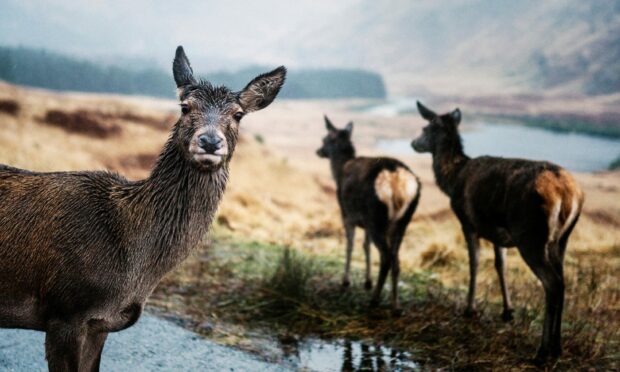Environmental officers have said “unsustainably high” deer numbers in Cairngorms National Park are having ecological consequences.
High numbers in the area reduce moorland diversity and the regeneration of woodland, disturbing the balance of the park.
They have called for the Cairngorms National Park Authority (CNPA) to address the issue in its new five-year plan, which is to be reviewed on Friday.
In an open letter to the authority, groups including John Muir Trust, Royal Zoological Society of Scotland and RSPB Scotland said: “Much of the park’s ecosystems are being damaged by excessively and unnaturally high deer numbers.”
They added: “[Reducing numbers] is essential if we are serious about protecting our environment while supporting the economic vitality of our rural communities.”
‘Huge ecological cost’
Deer management has been made a priority in the draft Park Partnership Plan. Deborah Long, chief officer at Scottish Environment Link, said the CNPA must remain committed to doing something about it.
“The Cairngorms National Park is one of the jewels in Scotland’s natural heritage crown,” she said.
“But we also have to accept that for too long, our approach to land management across Scotland has allowed deer numbers to become unsustainably high at huge ecological cost.
“The CNPA set out an ambitious approach to tackle deer numbers in their draft plan and in committing to implementing this, the park board will be ensuring Scotland builds its lead as a nature rich country, restoring its nature for future generations.”
‘Powerful regulatory actions’
Meanwhile, South Grampian Deer Management Group (SGDMG) has also been struggling with high deer numbers.
Though numbers have fallen in recent years thanks to organised culling, the group has accused some landowners in the area of not upholding their responsibilities when it comes to deer management.
Douglas McAdam, the group’s independent chairman, said: “What we are seeing here is a result of the majority of estates in our group area finally losing patience with those that will not pull their weight and work collaboratively to achieve common deer management goals.
“Put simply, the majority are tired of bearing the burden because a minority refuse to engage and deliver their responsibilities.”
To rectify this, SGDMG has called on NatureScot to use its powers under the Deer Act to implement “powerful regulatory actions” in instances where landowners are not cooperating.

Conversation